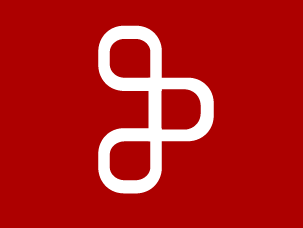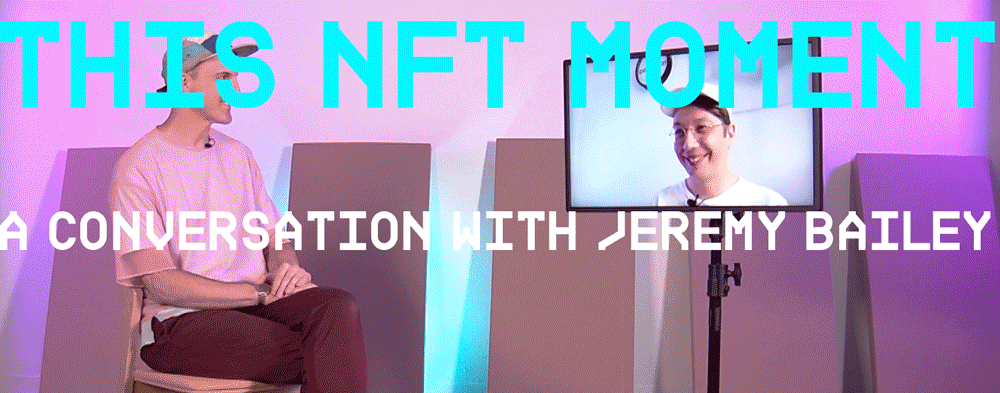“We have to participate. You have to be a co-owner of this future.”
Check out more about our Digital Economies Lab here at Artengine or go in-depth with the HOLO Digital Economies Reader.
More about Jeremy Bailey
https://www.jeremybailey.net/
https://youar.shop/
https://www.leanartist.org/
http://www.goodpointpodcast.com/
If you are unfamiliar with NFTs,
here are some links for you to check out.
Read Paul J Ennis at The Conversation for a quick review of the NFT in the context of the burning Banksy.
Rhizome has helpfully outlined a number of artist projects around monetization in the digital realm that predate the hype of the NFT, including Bailey’s YouAR that we discuss in the conversation above.
ArtNet News considers what we can learn about the NFT hype from the Comic Book bubble of the 1980s and 90s.
Go deeper with Why we need a feminist manifesto for the blockchain on HyperAllergic.
An interesting data analysis of sales and fees in NFT here.
Some NFT AND Other Projects Mentioned in conversation
Feral File/Casey Reas, in partnership with Bitmark – https://feralfile.com/
Folia/Billy Rennekamp – https://www.folia.app/
hic et nunc or H=N network – https://www.hicetnunc.xyz/
https://foundation.app/
https://niftygateway.com/ (The one the Winklevoss twins are involved in)
Rally: an open network that enables creators to launch independent economies powered by blockchain ethereum – https://rally.io/
OTHER TOOLS DISCUSSED
https://openframeworks.cc/ (toolkit designed for creative coding, founded by Zach Lieberman, Theo Watson and Arturo Castro)
https://www.processing.org/ (creative coding tool started by Ben Fry and Casey Reas)
https://p5js.org/ (created by Lauren Lee McCarthy)
Collaborators mentioned:
https://www.newrafael.com/ (Rafaël Rozendaal)
https://foundation.app/@newrafael (Rafaël Rozendaal)
https://billyrennekamp.com/ (Billy Rennekamp)
Selected Excerpts from the conversation
“Then I think the history that we’re talking about today really begins because the internet is a next-wave technology and artists, that we would now call Net artists, start to experiment in that realm. What I think is interesting is again, these artists, they weren’t actually trying to produce a counter narrative. They were producing a new narrative and corporations were catching up to them. So you had AOL and companies almost advertising, “This is the place where you will get to express yourself like an artist.” People were looking for the niches or edges of human experience the same way they might’ve done in person in the 1960s but now in this global village of the internet.”
“We have to participate. You have to be a
co-owner of this future.”
Ryan Stec
You mentioned something interesting. You’re being reductive about your YOUar project, saying it’s just a Shopify store, but that touches on the idea of the ubiquitous nature of these technologies and how the tools can be picked up by anyone and the backend elements can be taken care of, or cobbled together from pieces, to do what are quite unique and interesting things, without having to build this whole thing from the ground up.
Do you think one of the wider lessons of the NFT Moment, is to try to get local communities to be aware of this technological happening… if they see the NFT hype and try to understand it, to think that if that opens up into a world of–a plethora of–digital technologies that can allow you to make something that’s interesting and valuable for your community.
Jeremy Bailey
Yeah. I think that’s the portapak moment, right? Like you pick up the camera in 1969.
You’re Nam June Paik.
You go to the Macy’s department store.
You pick up a video camera, you get in a cab, you get stuck in traffic cause the Pope’s there…
You record the Pope going by and you show it in a gallery in Soho later that night.
You call it Video Art.
But if he didn’t go to Macy’s and pick it up, or try, or record the Pope; if you didn’t have that experience, you didn’t really participate in a cultural movement.
I think the fear I have is that by having an allergy to anything new, we reject the possibility of progress. And, you know, to a certain extent, we say… I was talking to someone who works in the quote unquote “Arts”, you know, like opera, ballet, and they’re a thinker in that space and they were saying,
“That whole realm of making now considers itself an elite group of people who exist solely to protect something that would otherwise not exist.”
So, they exist at a point in time, 300 years ago, and their job is as stewards of this rare vase or artifact. Right. They’re almost like a time capsule, but they also have the position that the audience can’t possibly understand the value of that artifact. So, their audience numbers have been falling over time and they actually consider themselves in direct conflict with their audience, which I find really interesting as an internet artist where you almost have the opposite problem. Where it’s like, “I want more audience, more, more, more!” Right? Like “I need more ‘likes.'” If you had that attitude on the internet… how you would value the work differently, but maybe there’s something in the middle: between “we reject the concept of an audience” and “we are just a vessel of history.”
Read more on this from David Maggs at The Philanthropist. Maggs is reflecting on this relationship between culture and audience, particular in the post-pandemic world.
Jeremy Bailey
But that’s the thing, I think that’s the keyword. If I was going to hashtag this thing, it would be:
#participate
But, if you don’t participate you don’t actually get to be a part of the happening and the happening is where we arrive at the new experience that we’ve never had before.I think our rejection of it is dangerous because you leave it in the hands of the few that might not necessarily be in the right place to make a good decision socially, because it is so macro in scale.
It’s not like we’re going to fall back on something else. It’s not like the Arts and Crafts movement’s just ahead of us and we’re going to start whittling wood. It’s just not going to happen that way.
Ryan Stec
I think it’s really interesting, that’s the question, how do we participate? And, and how do you think about participation in a very complex technological world, right?
Where participation in the early 20th century–well in the early 20th century it was already too complex, right? Like for you to participate in politics (and democracy) was conceived, when community and localness was perhaps the extent of your effect in the world, and now it’s so huge. So, I think, really, artists need to be part of the laboratory of thinking about how we participate in discussions that have ramifications–global ramifications–in all of those wicked problems that you’ve been talking about.
As we sort of touch back on the question of this technological moment and the blockchain contractual sort of obsession that’s happening right now, what do you think can emerge from there for people? What do you think is the most interesting thing to sort of come out of this moment? Or should we try and foster like more interesting activity there?
Jeremy Bailey
It’s really happening fast and, in ways that I can’t ignore, and are somewhat exciting. And even if it reproduces a certain amount of power, there are certain displacements of power that’s very exciting to me.
As an example, a friend of mine recently went to work at a company. The company is called Rally and they exist to help creators create their own coins and basically their own economies around their practice, where people who participate in their practice can increase the value of their participation. It’s kind of bizarre. The actual organization is based in Silicon Valley, but is decentralized and the creators actually vote on the progress of the company and all of the decisions that get made. Right. So, you know, I would never have imagined that 10 years ago that there would be companies that start up and they’re like, “Our model is going to be cooperation from day one.” And “We’re going to let the customers vote on our most important issues,” kind of thing.
People still get paid, don’t get me wrong. And they’re also taking a cut, but the fact that it’s a decentralized distributed model of decision making from day one as a company, it was really interesting. It’s really interesting to me.
Similarly, there are artists cooperatives, like I’ve mentioned a few and artists-run startups where the artists are generating better splits like 90/10, or, you know, 85/15 for the artists. And not only that, building in royalties for the secondary market, which we know is where most of the excess value is created. Right? So I’ve been working with a group in Berlin to launch a platform. We’re working towards a prototype in the fall. And we brought a summer school of individuals together, and it’s really amazing to see who’s joined the summer school, by the way.
It’s like people from startups, artists, all kinds of people. But, you know, one of the things that we hit early on in terms of like,
“Well, which technology?”
What technologies should we use was like the idea of a value exchange in the secondary, tertiary, and whatever?
How does value propagate over time?
And I think the blockchain, like we keep coming back to it. We can’t think of another technology that’s better at automating the practice of being accountable to the original creator, and of course there are legal precedents for this, right.
I don’t know if you’ve ever had to chase down your copyright, because I’ve had stuff as an artist, it is really expensive and really inaccessible to an artist. So, if we could even automate the legal layer of protecting your creative copyright, in some manner, I think that represents tremendous value.
Now I know there’s a lot of fault in the current implementation of a lot of these platforms that they don’t actually protect your copyright at all, because someone could just steal the thing and you’re still not legally protected. But, I see this as like stairs in a staircase toward an ideology and the ideology is right, which is like attribution to the artist over time matters.
Produced by the Artengine Stream Team:
Mikki Gordon aka Seiiizi https://twitter.com/s3iiizi
Ryan Stec
Kimberly Sunstrum https://www.kmbrlysnstrm.com/
Editorial Assistant: Erin Galt
Production Design Consultation: Leslie Marshall/MAVNetwork http://www.mavnetwork.com/
Post-Production Support: Chris Ikonomopoulos
DEL Theme Music by Mikki Gordon aka Seiiizi
Artengine’s Digital Economies Lab brought together a diverse group of artists, designers and other creatives to rethink the infrastructure of cultural production in the 21st century.
Funding for the Digital Economies Lab was received through the Canada Council for the Arts Digital Strategies Fund.
Operational funding for Artengine is provided by the City of Ottawa, the Ontario Arts Council and the Canada Council for the Arts.

